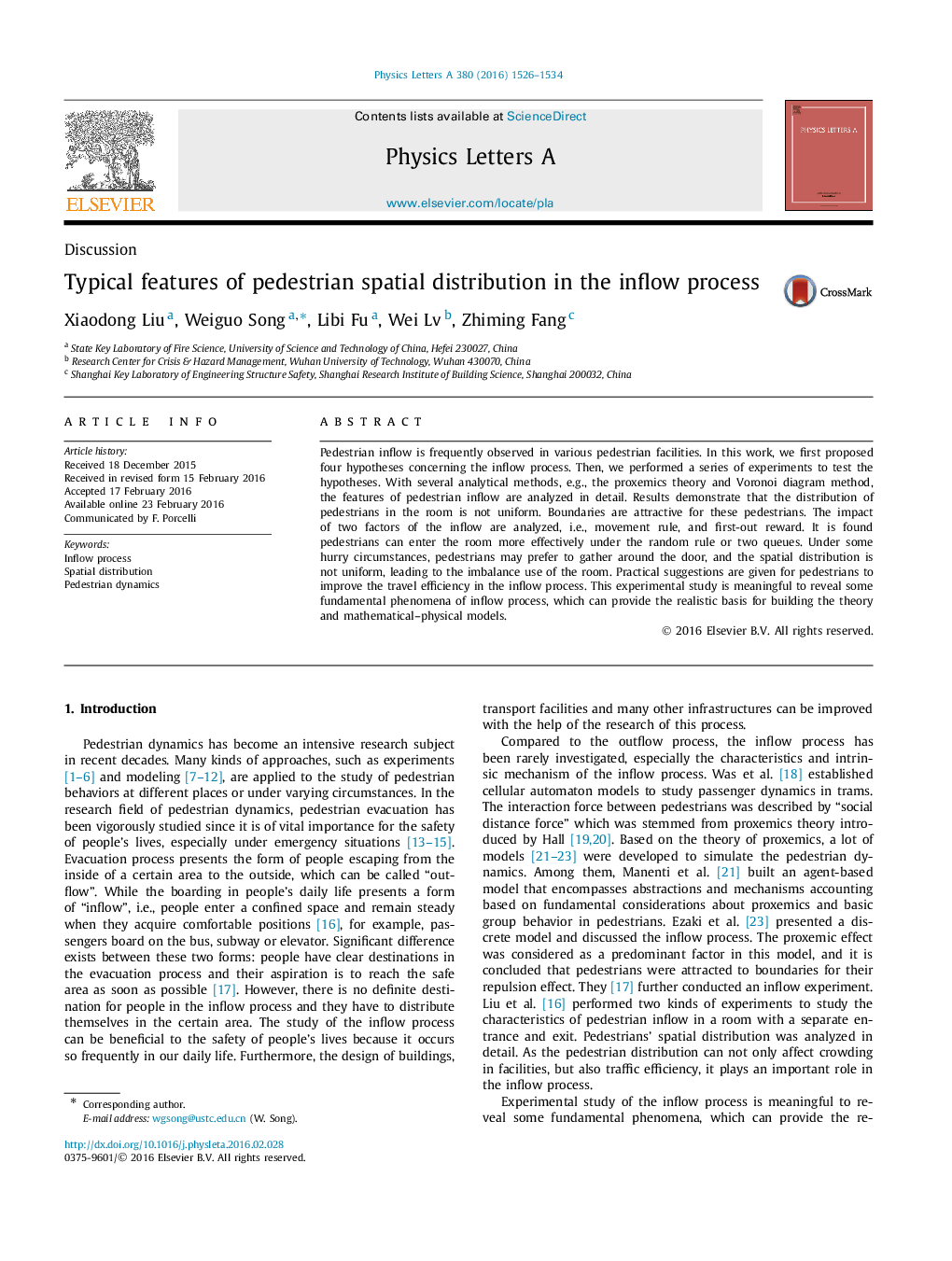| Article ID | Journal | Published Year | Pages | File Type |
|---|---|---|---|---|
| 1860737 | Physics Letters A | 2016 | 9 Pages |
Abstract
Pedestrian inflow is frequently observed in various pedestrian facilities. In this work, we first proposed four hypotheses concerning the inflow process. Then, we performed a series of experiments to test the hypotheses. With several analytical methods, e.g., the proxemics theory and Voronoi diagram method, the features of pedestrian inflow are analyzed in detail. Results demonstrate that the distribution of pedestrians in the room is not uniform. Boundaries are attractive for these pedestrians. The impact of two factors of the inflow are analyzed, i.e., movement rule, and first-out reward. It is found pedestrians can enter the room more effectively under the random rule or two queues. Under some hurry circumstances, pedestrians may prefer to gather around the door, and the spatial distribution is not uniform, leading to the imbalance use of the room. Practical suggestions are given for pedestrians to improve the travel efficiency in the inflow process. This experimental study is meaningful to reveal some fundamental phenomena of inflow process, which can provide the realistic basis for building the theory and mathematical-physical models.
Related Topics
Physical Sciences and Engineering
Physics and Astronomy
Physics and Astronomy (General)
Authors
Xiaodong Liu, Weiguo Song, Libi Fu, Wei Lv, Zhiming Fang,
